Let's look at a few images showing episodes from his early life, before he founded the order. In some cases, we can see the supposed locations as well.
The scene below is described in this way by St Bonaventure (1221 - 1274), who was minister general of the order from 1265.
A certain citizen of Assisi, a simpleton as was believed,
yet one taught of God, whensoever he met Francis going through the city,
would doff his cloak and spread the garment before his feet, declaring
that Francis was worthy of all honour, as one that should ere long do
mighty deeds, and was on this account to be splendidly honoured by all
the faithful. But
as yet Francis knew not the intent of God concerning him, forasmuch as
he was both drawn away unto external things by his fatherís calling, and
weighed down toward earthly things by the corruption inborn in our
nature, and had not yet learned to contemplate heavenly things, nor
accustomed himself to taste of divine.
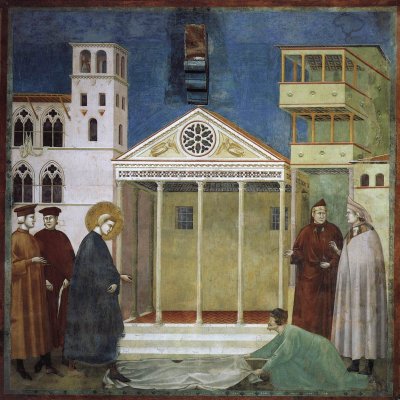
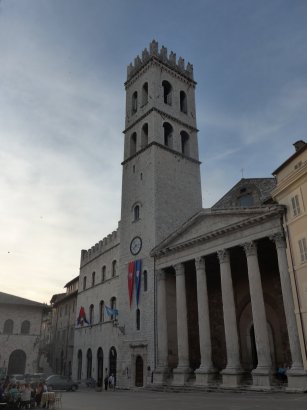
Another text by Bonaventure, and the matching Upper Church image.
But once on a time, when he had been busied with the cares of his
trading, and, contrary unto his wont, had sent empty away a certain
beggar who besought an alms for the love of God, he forthwith, returning
unto his pitiful mind, ran after him, and bestowed alms in merciful wise
upon him; promising unto the Lord God that thenceforward he would never,
while he could, refuse any that asked of him, pleading the love of God.
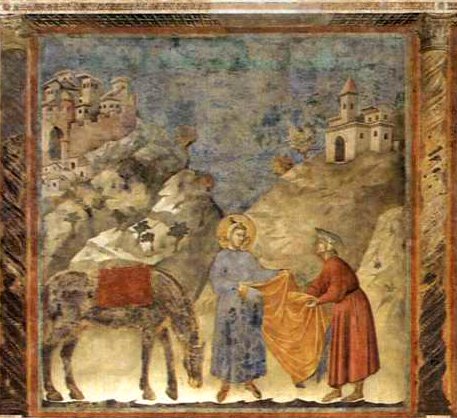
For a change, let's look at a different art location and a different biographer of Francis. This fresco is truly by Giotto, and is in the Bardi Chapel in Santa Croce in Florence. A lively scene; note the children being restrained from throwing stones at Francis. This shows the scene in which Francis throws off his well-to-do clothes and gives them back to his father. The event is described here by Thomas of Celano, (c1185 - 1265) Francis's first biographer.
When he was in front of the bishop, he neither
delayed nor hesitated, but immediately took off threw down all his
clothes and returned them to his father. He did not even keep his
breeches on, and he was completely stripped bare before everyone. The
bishop, observing his frame of mind and admiring his fervour and
determination, got up, and gathering him in his own arms, covered him
with the mantle he was wearing.
Standing
naked in the piazza, Francis must have felt a lightness of being. By
shedding his clothes, he had dropped all the burdens he had carried
since he had reached the age of reason. He had been freed to follow
Godís will.
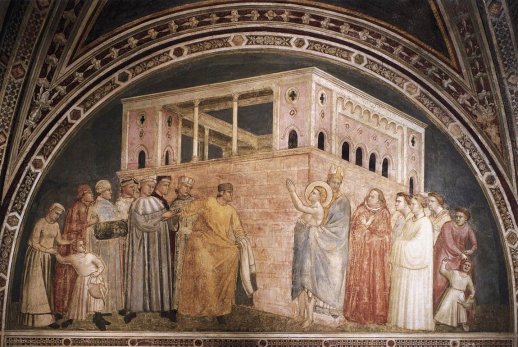
Here is the place claimed to be the location of the stripping of Francis. The church is Santa Maria Maggiore: at this point in time it was the cathedral of Assisi. The nearby gate is that of the Bishop's palace.
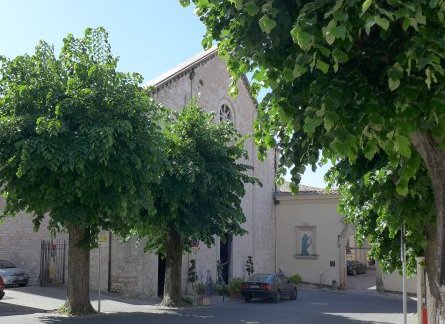
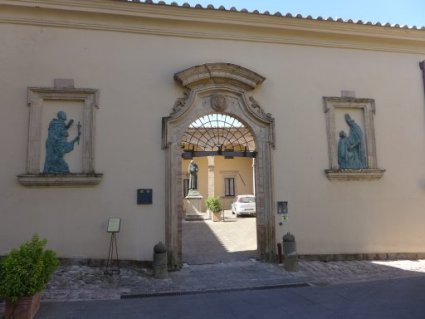
Back to page 1 On to Legends of a lifetime
Home page - explore the site